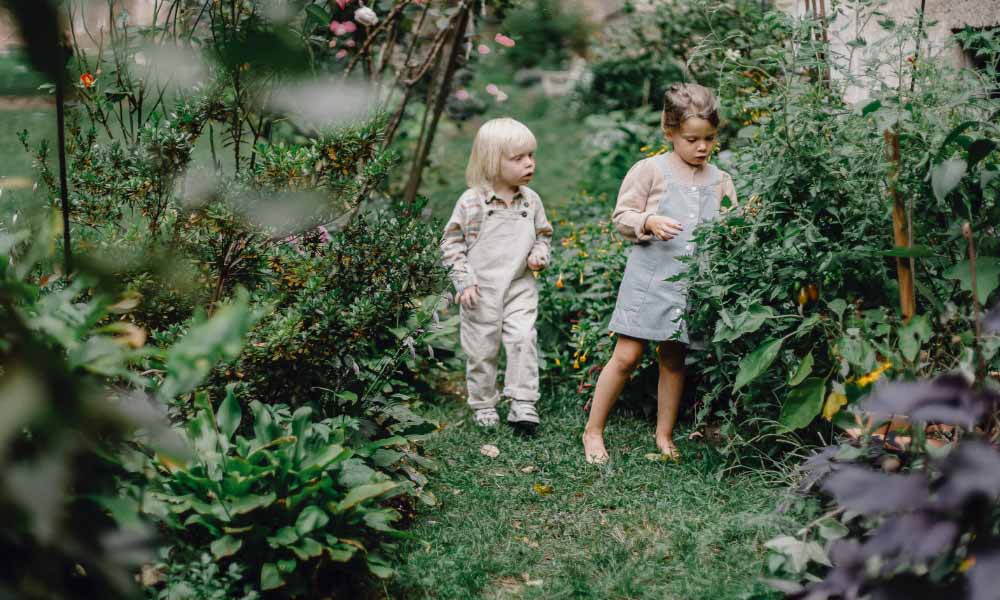Are your kids stressed about homework after school? Or maybe they are having trouble quieting their mind in the evening at bedtime? Both mindfulness and nature help bring a sense of calm to your children when they need it most.
“Nature meditation can help you cultivate a loving connection with yourself, the earth, and the entire web of life,” according to Buddhist meditation teacher Mark Coleman of Awake in the Wild.
Through techniques like sights, sounds, and stories, we can help our children harness the calming aspects of nature during bedtime, dinnertime, car rides, and other moments throughout their day. The best part is that nature meditation does not always have to be performed outdoors; from visualizations to nature sound apps, there are so many ways to experience mindfulness using nature even from inside the comfort of your home.
Sights
Amazingly, just looking at pictures of nature scenes can make us feel similar to actually spending time outdoors. A recent study found that you can reduce stress by simply looking at images of nature. When participants viewed pictures of natural scenes, their stress level decreased because their parasympathetic nervous system (which helps us calm down) was activated. Another experiment proved this by observing brain activity using magnetic resonance imaging (MRI).
The researchers discovered that when participants viewed scenes from the natural environment, the parts of their brain associated with empathy and love lit up. On the other hand, when they looked at urban scenes, the parts of the brain associated with fear and anxiety were activated. There are so many ways for our kids to feel mindful from looking at nature:
1 | Get outside
Visit zoos, mountains, forests, hiking trails, beaches, waterfalls, botanical gardens, canyons, and caves, and enjoy clear starry nights, rainbows, sunsets, and sunrises. Help your kids capture these moments by taking pictures so they can look at them anytime they want to relax.
2 | Observe nature using various media tools
This can include videos, photographs, slideshows, and even 3D or 4D movies at an IMAX theater. Check out these nature documentaries, Jason Silva’s "Shots of Awe," and Louie Schwartzberg’s "Gratitude Revealed." For little ones, explore the seas with Ocean Explorers from Baby Einstein.
3 | Practice meditations that tap into nature scenes
For example, the Over the Rainbow Breathing meditation instructs children to breathe in each color as they visualize a rainbow and then say a positive affirmation either silently or out loud.
4 | Add a fish tank to your child’s room
They will love lying in bed and watching and listening to fish swimming around a tank. A colorful fish tank adds to the natural atmosphere in the room and provides something tranquil and soothing for your child to enjoy as they try to fall asleep.
Sounds
For hundreds of years people have known that the sounds of nature can soothe our soul and improve our mood. I recall how happy and relaxed I felt while sitting on the beach and getting lost in the pattern of the crashing waves, walking through El Yunque rainforest in Puerto Rico and focusing on the gushing of the stream below, and hearing the lovely chirping birds in an arboretum we visited.
But until recently, scientists did not understand why nature sounds have such a powerful effect on our bodies and minds. A group of researchers at Brighton and Sussex Medical School (BSMS) in England just discovered that these sounds physically alter the connections in our brain, reducing our body’s natural fight-or-flight instinct.
Their study, published in "Scientific Reports," is the first to use brain scans, heart-rate monitors, and behavioral experiments to identify an actual physiological cause for how nature sounds impact us. After observing adults who underwent functional MRI scans while listening to various soundscapes of natural or artificial environments, researchers found that activity in the brain’s default mode network, such as mind wandering and task-free states of wakefulness, varied depending on the background sounds being played.
Listening to artificial sounds, for example, was linked to inward-focused thinking like worrying, while nature sounds were associated more with external-focused attention that is more calming. In addition, heart rate data showed that the nature sounds led to a decrease in the body’s fight-or-flight response and an increase in parasympathetic response that helps the body relax.
Not all nature sounds have the same calming effect. The best sounds are those that give us a sense of natural space and mimic the biorhythms of an ecosystem like a forest. Studies show that it’s based on how our brain interprets different noises. Loud chirping and croaking is just not going to cause the same calming feelings as sounds of water, which are very soothing because of their slow, rhythmic whooshing noises from crashing waves, the pitter patter of rainfall, or the rush of a flowing river.
By listening to soothing sounds of nature, children can feel more mindful. Ask them to sit back and close their eyes while they listen to the relaxing noises they hear. Teach them how to use visualization techniques and their own imagination to feel the full effect. We can bring the serene sounds of nature into our daily lives using the following tools:
1 | Nature meditation CDs and apps
There is an entire industry focused on selling relaxation music. You can choose from a variety created specifically for children or focused on the types of sounds included. Try out a few different kinds to see what your children likes best. Some have music along with nature sounds and others are just the sound like rushing water or chirping birds.
2 | Record your own
Take along a recording device during a nature walk, trip to the beach, or other excursion out in nature. Capture those relaxing sounds to play again later.
3 | Indoor water fountain
One of the local spas by my home has a relaxation room with the most soothing man-made waterfall on the rock-covered wall. Consider adding a small waterfall to your home to enjoy.
Stories
Throughout history, poetry has fascinated readers and inspired them to understand the world in a deeper way. Many nature lovers have used poetry to communicate their connection to the environment. We can inspire our children’s sense of awe for the natural world by reading descriptive stories and poetry that essentially transport them from their bedroom into a tranquil forest, mountaintop, or other amazing place. When we witness the beauty and vastness of nature, even through words on a piece of paper, it can trigger a number of powerful positive emotions like awe and relaxation. Try these ideas with your kids:
1 | Library
Have fun checking out different books from the library known to have colorful descriptions of nature.
2 | Poetry
Introduce your children to a variety of nature poetry and challenge them to write their own. Some of the most famous nature poets include: Robert Frost, Alfred Lord Tennyson, William Wordsworth, P.B. Shelly, and John Keats.
3 | Journaling
After visiting a beautiful outdoor location, such as the beach or botanical garden, encourage your kids to journal about their observations so that they can refer back to it for some mindful moments based on those memories.



